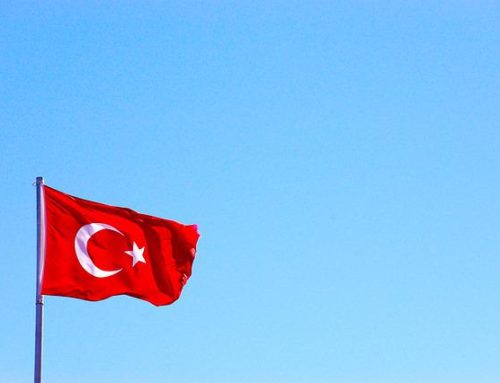02.01.2021
Sustainable Development Indicators, 2010-2019
Global indicators identified as currently available at national level and proxy indicators considered to be appropriate to measure relevant target are published with this press release as total 131 indicators together with definitions.
Relative at risk of poverty rate decreased by approximately 2.5 percentage point in 2010-2019 period
The at risk of poverty rate according to poverty threshold set at 50% of median equivalised household disposable income was realized as 14.4% in 2019 with an approximately 2.5 percentage point decrease compared to 2010 which was 16.9%. While in-work at risk of poverty rate of population was 17.9% in 2010, it decreased by 4.7 points in 2019 to 13.2%. The proportion of people at risk of poverty or social exclusion was 39.8% in 2019, decreased 25.9 percentage points from 65.7% in 2010.
Proportion of people at risk of poverty or social exclusion, 2010-2019
Maternal mortality ratio and under-five mortality rate decreased
While maternal mortality ratio was 16.7 per hundred thousand live births in 2010, this ratio decreased to 13.1 in 2019.
The under-five mortality rate was 11.2 in 2019, compared to 15.5 per thousand live births in 2010. In the same period, the neonatal mortality rate also decreased from 7.6 to 5.7 per thousand live births.
While the adolescent fertility rate per thousand women in the 15-19 age group was 33.8 in 2010, it was 16.7 in 2019.
While the percentage of smokers aged 15 and over was 29.5% in 2010, it increased to 31.3% in 2019. In 2019, the percentage of tobacco smokers among males was approximately 2.5 times the ratio of tobacco smokers among females.
School completion rates according to education levels increased in the 2014-2019 period
Primary, lower secondary and upper secondary school completion rates were 97.7%, 94.1% and 58.8% in 2014, respectively, while in 2019 they were 98.6%, 97.7% and 70.3%.
While the net schooling ratio of age five was 67.2% in 2015, it increased by 7.9 percentage points in 2019 and reached 75.1%. In the same period, net schooling ratio increased from 55.5% to 71.2%.
The proportion of young people (aged 16-24) who are capable of writing code in a programming language was 5.7% in 2010, whereas in 2019 it was 7.5%. In the same period, this ratio increased from 2.8% to 3.2% for adults (16-74 years old).
Proportion of women aged 20-24 years who were married before the age of 18 decreased
The proportion of women in the 20-24 age group who were married before the age of 18 was 8.2% in 2010, whereas it was 5.1% in 2019.
The proportion of seats held by women in local governments was 9.9% in 2014, whereas it was 10.1% in 2019.
While the proportion of women in managerial positions was 14.4% in 2012, it was 17.5% in 2019. In the Industry and Services sectors, this ratio was 10.2% and 17.9% in 2012, respectively, while it was 10.8% and 22.7% in 2019.
Proportion of women in managerial positions, 2012-2019
The proportion of domestic and industrial wastewater flows safely treated increased in 2010-2018 period
The proportion of domestic and industrial wastewater flows safely treated was 72.8% in 2010, whereas it increased by 8.1 percentage points to 80.9% in 2018.
Water use efficiency in the manufacturing industry over time (value added per unit for 1 m3 water use) increased from USD 0.159 / m3 in 2010 to USD 0.182 / m3 in 2018.
Change in water-use efficiency over time by sectors, 2010-2018
The electricity generation ratio from renewable energy and wastes was 43.9% in 2019
While the electricity generation ratio from renewable energy and wastes was 26.4% in 2010, this ratio increased to 43.9% in 2019.
While the renewable energy share in the total final energy consumption was 9.9% in 2010, it decreased to 7.6% in 2019.
The installed renewable energy-generating capacity increased from 235.2 watts per capita in 2010 to 538.4 watts per capita in 2019.
Installed renewable energy-generating capacity, 2010-2019
Proportion of youth (aged 15-24 years) not in employment, education or training was 26.0% in 2019
While the proportion of youth (aged 15-24 years) not in employment, education or training was 32.3% in 2010, it was realized as 26.0% in 2019.
The proportion of employment without having a social security registration in total employment was 43.3% in 2010, and 34.5% in 2019.
R&D expenditure as a proportion of GDP reached 1.06% in 2019
While the share of research and development (R&D) expenditure in the gross domestic product (GDP) was 0.79% in 2010, it was realized as 1.06% in 2019. While the number of researchers per million inhabitants in terms of full time equivalent (FTE) was 880 in 2010, this number increased to 1 641 in 2019.
The value added of manufacturing industry as a proportion of the GDP was 15.1% in 2010 and reached 18.3% in 2019 with an increase of 3.2 percentage points. The share of manufacturing employment in total employment was 18.7% in 2010 and it increased to 18.4% in 2019.
The share of R&D expenditure in GDP and Manufacturing industry’s share in total
number of researchers, 2010-2019 employment and GDP, 2010-2019
Total greenhouse gas emissions was 520.9 Mt CO2 equivalent in 2018
While total greenhouse gas emissions for Turkey were 398.9 million tonnes of CO2 equivalent in 2010, it was realized as 520.9 million tonnes of CO2 equivalent in 2018. The largest share in CO2 equivalent emissions in 2018 was produced from the electricity, gas, steam and air conditioning supply sector with 29%, and the manufacturing industry with 26%.
Total greenhouse gas emissions, 2018 Greenhouse gas emissions by sectors, 2018
The average share of the built-up area of cities that is open space for public use for all was 13.56% for Turkey in 2019
Share of built-up area that include public spaces such as parks, recreational areas, civic parks, gardens, squares and plazas as well as land allocated to streets and avenues at Turkey level was measured at 13.56%. While the province with the highest ratio is Istanbul with 21.1%, the lowest one is Bingöl with 6.2%.
Average share of the built-up area of cities that is open space for public use for all, 2019
The proportion of forest area was calculated as 29.2% as of 2019
While the forest area as a proportion of total land area was 27.1% in 2010, it increased by 2.1 percentage points in 2019 to 29.2%. In the same period, the normal forest area as a proportion of total land area increased from 14.6% to 16.8%.
The proportion of young and women deputies in the Grand National Assembly of Turkey (TGNA) increased
The proportion of young deputies in the Grand National Assembly of Turkey (45 years old and younger) was 29.8% in 2018, whereas it was 28.4% in 2011. In the same period, the proportion of women deputies increased from 14.4% to 17.3%.
While the representation of young eligible to be elected as deputies (the ratio of “the proportion of young deputies in the TGNA” to “the proportion of young people eligible to be deputy”) in the total population was 0.88 in 2011, this representation decreased to 0.69 in 2018. In the same period, the representation of women who are eligible to be elected as deputies in the TGNA increased from 0.28 to 0.34
Representation of young eligible Representation status of women eligible
to be elected in the TGNA, 2018 to be elected in the TGNA, 2018
The number of victims of human trafficking increased from 58 in 2010 to 215 in 2019. Victims of human trafficking were in 18-35 age group with the highest ratio of 68% in 2019 and the proportion of women victims among human trafficking victims was 91% in the same year.
The proportion of unconvicted prisoners in prison decreased from 27.4% in 2010 to 15.9% in 2019.
The share of net official development assistance in GDP was 1.14% in 2019
The total amount of Turkey’s net official development assistance as donor country provided to the less developed and developing countries in the 2010-2019 period increased by almost nine times, amounting to 8 billion 667 million USD in 2019. Humanitarian assistance provided by Turkey in 2010 was 153 million USD, which then it has reached 7 billion 541 million US dollars in 2019. The share of net official development assistance in GDP increased from 0.12% in 2010 to 1.14% in 2019.
Net official development assistance, share of net official development assistance in GDP and humanitarian assistance, 2010-2019
The proportion of individuals using the Internet was 74.0% in 2019
The proportion of individuals using the Internet within the last 3 months was 37.6% in 2010 and 74.0% in 2019. This ratio was 80.4% for male and 67.6% for female in 2019. The proportion of individuals who use a mobile phone was realized as 93.5% in 2019. This ratio was 96.9% for male and 90.2% for female.
Proportion of individuals using the internet within the last 3 months by education level, 2010-2019
Explanation: The global indicators included in the 2030 Agenda aim to measure progress under 17 goals and 169 targets. Therefore, it is aimed to present each indicator where the relationship of each indicator with the relevant goal and target can be easily shown and the changes on the indicator basis can be expressed effectively and through data visualizations on an independent platform. In this context, TurkStat will make its web portal public, where the 2030 Agenda indicators can be presented online, by announcing on her website (www.tuik.gov.tr) in the following days. For this reason, the press release on Sustainable Development Indicators will not be published anymore, and the data related to the indicators can be followed up timely on the web portal. In addition, when the updates regarding the indicators are made available on the web portal, users will be informed by making an announcement about this issue on the TurkStat website.
Source: TurkStat
Legal Notice: The information in this article is intended for information purposes only. It is not intended for professional information purposes specific to a person or an institution. Every institution has different requirements because of its own circumstances even though they bear a resemblance to each other. Consequently, it is your interest to consult on an expert before taking a decision based on information stated in this article and putting into practice. Neither Karen Audit nor related person or institutions are not responsible for any damages or losses that might occur in consequence of the use of the information in this article by private or formal, real or legal person and institutions.






